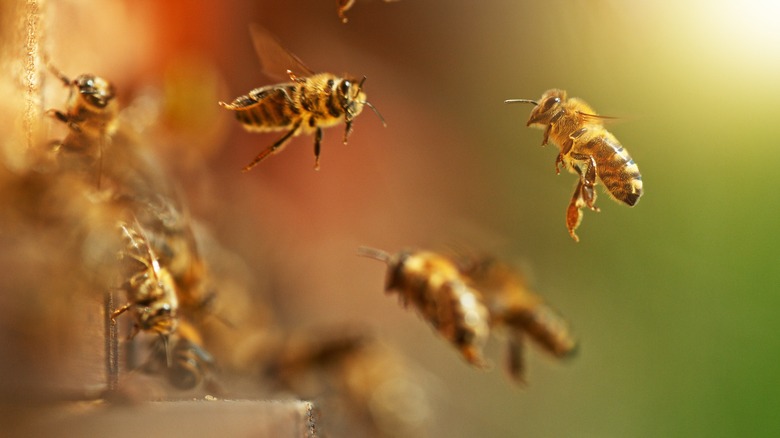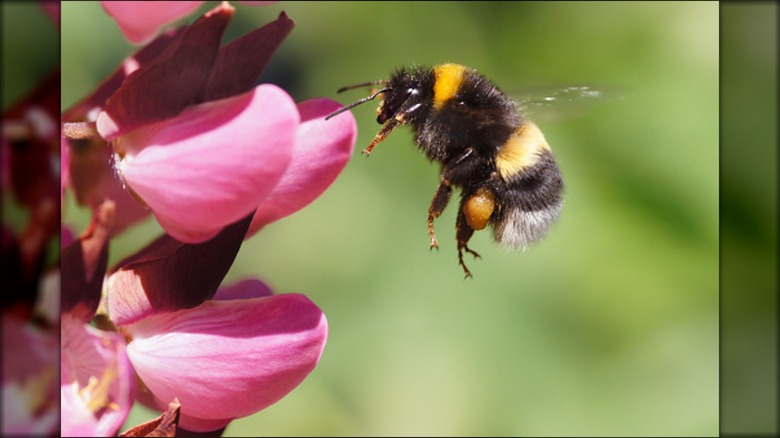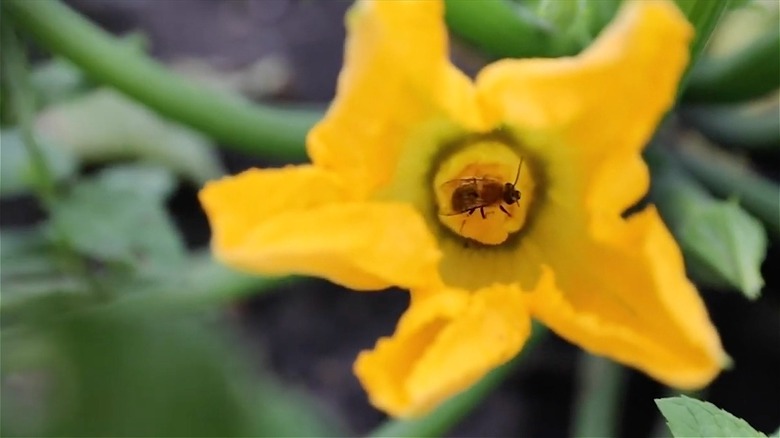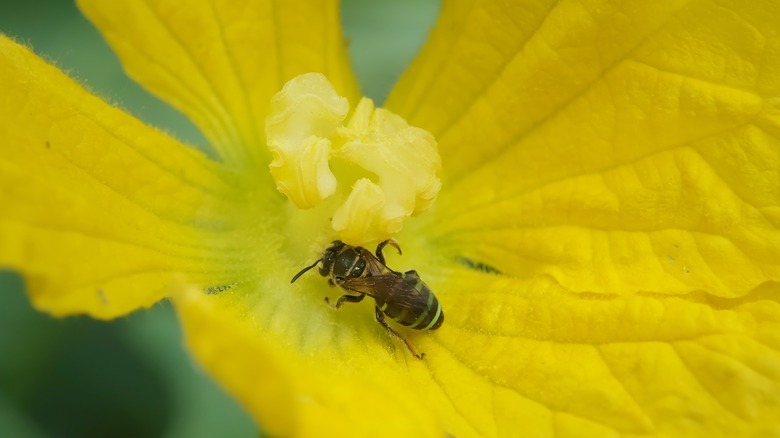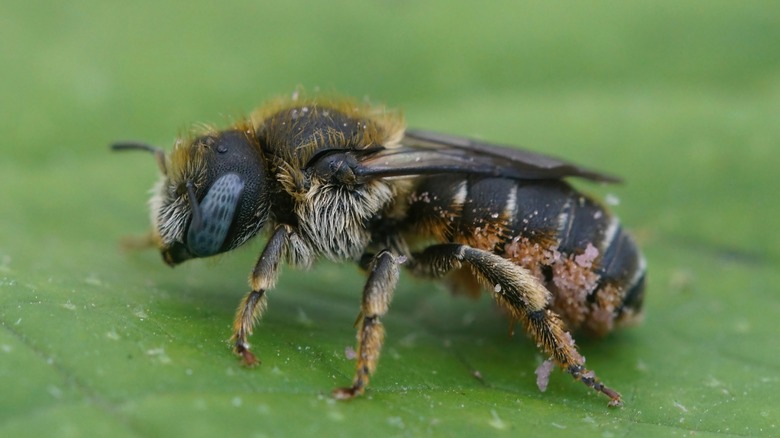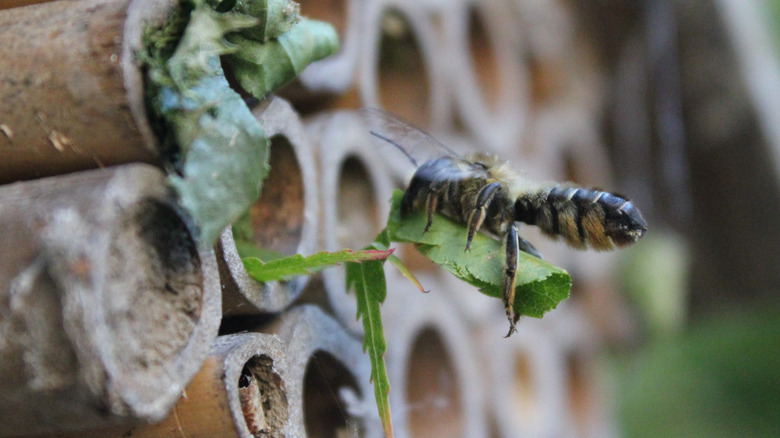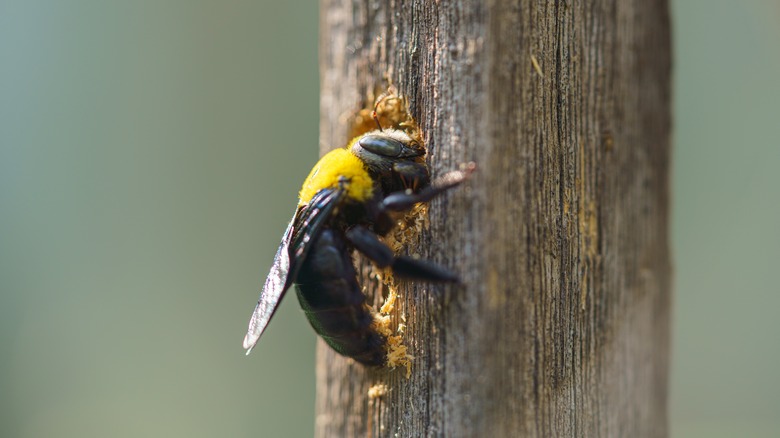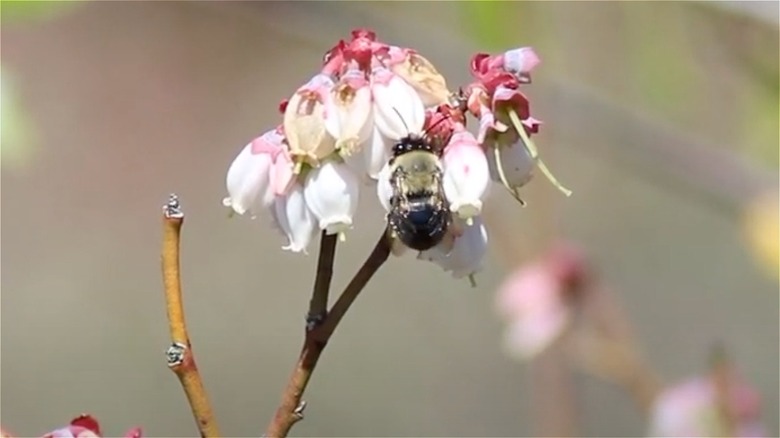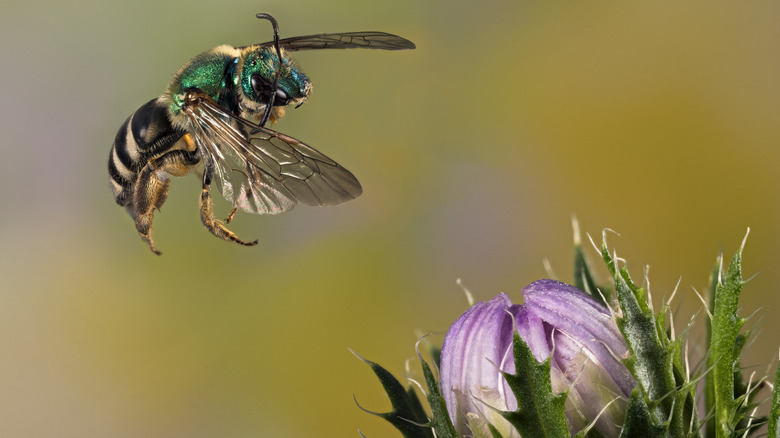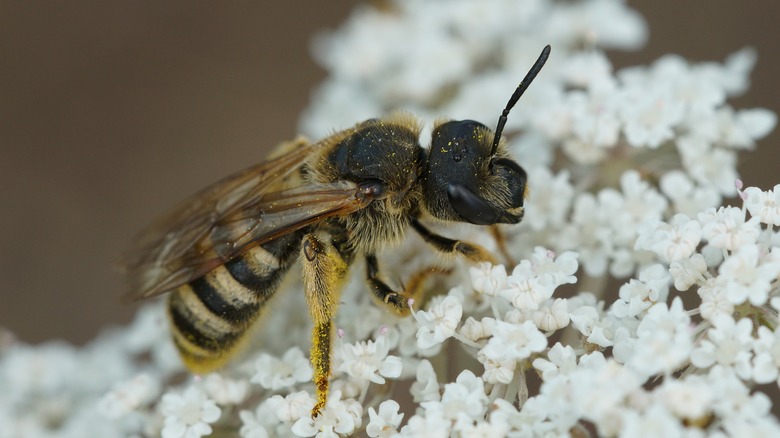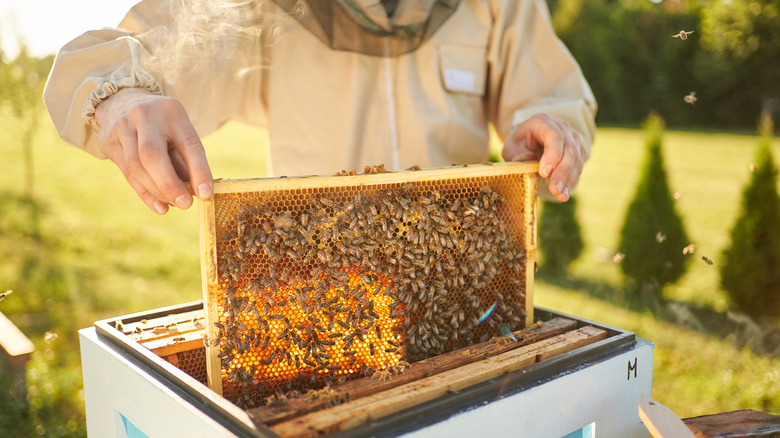10 Types Of Beneficial Bees You'll Want In Your Garden (& Tips To Attract Them)
Every gardener knows how essential bees are to growing your favorite vegetables, plants, and flowers. In fact, because bees pollinate many of the foods we eat, if they didn't exist, 5% to 8% of crops across the world would be lost, per a 2021 article published by Insects. From our food to what livestock eat, you can bet there is a bee that helped grow it.
Honeybees and bumblebees are the two that come to mind for gardeners and non-gardeners alike. However, there are also many other types that are beneficial when growing a garden. Squash bees, mason bees, and blueberry bees are just a few of the species that may visit your yard to aid in pollination. If attracting more bees is one of your gardening goals, these are 10 types that will be beneficial and some tips on luring them into your garden.
In order to bring more bees to your garden, you want to plant what they're attracted to. While planting wildflowers and native flowers is a great way to start a pollinator garden and lure in bees in general, if you want to attract certain types, you need to research what specific kind of plants they pollinate. It's also important to avoid using pesticides in your garden. Pesticides can be harmful and toxic to bees and other beneficial pollinators like butterflies, so use natural pest control solutions whenever possible.
1. Bumblebees
Most people know that bumblebees are one of the most important pollinators. There are over 250 species that tend not to be aggressive towards humans, so they're great garden visitors. Growing flowers that will bloom throughout the season will help bring more bumblebees. Consider primrose and sweet rocket for the spring, lavender and honeysuckle for summer, and sweet scabious and aster in the fall. Planting more blue, purple, pink, or yellow flowers, as well as more perennials, can also attract more bumblebees to your garden. For example, yellow perennial yarrow or pink or purple lupine would be great for bees.
2. Squash bees
In order to have a thriving gourd garden, you need squash bees. Many people try to keep bugs and pests away from their vegetable gardens, but keeping squash bees away is one of the mistakes everyone makes when planting squash. There are two genera – Peponapis and Xenoglossa – both of which pollinate crops like zucchini, butternut squash, cucumbers, and pumpkins through the vegetables' flowers. Of course, having an abundance of gourds will help bring these bees to your garden. However, if you want squash bees to call your yard home, also don't till the soil deeply since these bees build their nests underground (like some bumblebees).
3. Alkali bees
Alkali bees are native to deserts in the Western and Southwestern United States, thriving in an environment that most other bees cannot. These bees are able to pollinate vegetables in the pea family such as lentils, beans, peanuts, and other legumes. In particular, alkali bees are great at pollinating alfalfa. The flowers in this family require a mechanism to be tripped in order to reveal the stigma and get to the pollen, and alkali bees have developed a technique to do this better than others. These bees also nest in the ground, so leave untouched soil with a salty surface in your yard to attract them.
4. Mason bees
Mason bees are extraordinarily-efficient pollinators because their hairy bodies allow them to transfer copious amounts of pollen. They also begin pollinating early in the spring before other types of bees like honeybees. They're great at pollinating fruits like apricots, blueberries, cherries, and peaches, as well as flowers within the rose family. By providing tunnels to nest in either through a purchased mason bee house or by drilling holes that are 5/16-inch wide and 6 inches deep in wood, you can attract mason bees into your garden. You'll also need to give them a mud source so they can build barriers around their eggs as well.
5. Leafcutting bees
If you've ever noticed circular pieces neatly cut out of leaves, there's a good chance it's due to leafcutting bees, as they use these pieces to help build their nests. These bees pollinate many wildflowers as well as fruits and vegetables throughout North America, where they are native. Planting blueberries, carrots, and onions can provide them with good flowers to pollinate. Adding azaleas, roses, and bougainvillea to your garden provides the ornamental leaves these bees use to build nests. Similar to mason bees, you can purchase or build a house with tunnels for leafcutting bees to build their nests in.
6. Carpenter bees
Many wish to get rid of carpenter bees from their homes because they see them as pests. However, while they can bore holes into wood that can lead to damage, they are still important pollinators because they are a native bee species across much of the United States. They're good at pollinating vegetables like eggplants and tomatoes as well as many other crops through buzz pollination, which means they shake the pollen out of flowers. You could attract them with pieces of weathered softwoods like cedar and pine. However, to keep them from damaging your other structures, pressure-treat, paint, or stain your deck, furniture, or siding.
7. Blueberry bees
Love fresh blueberries on top of your waffles, desserts, or just by the handful? You have blueberry bees to thank for them. These bees are efficient at pollinating both native and commercially-grown blueberries, and they use buzz pollination to do so as well. Because blueberry bees are active in early spring, they're very important for pollinating the fruit. Of course, planting blueberry bushes in your yard will likely attract these bees. However, you also want to avoid using pesticides on the bush and in your yard and provide loose, exposed soil where they can nest underground.
8. Virescent green metallic bees
The virescent green metallic bee is identified by a vibrant green or bluish body. It's a species that's native to the United States and southern parts of Canada. They love the Asteraceae flower family like coneflowers, sunflowers, asters, and daisies but pollinate many other plants as well. These are common bees to see in urban areas, so they're good to attract to city gardens or backyard gardens in busy neighborhoods. They also nest in the ground, so leaving some bare space for them to tunnel and build underground nests will attract them to your yard.
9. Furrow bees
Furrow bees can be found throughout the Northern Hemisphere with many species prevalent in northern and western areas of North America. These bees aren't picky about what plants they pollinate, so you'll often find them on wildflowers, fruits, and vegetables. Having a wide variety of these plants will make your garden attractive. These bees tend to nest underground as well or in rotted wood, so leaving an open patch of yard will make your space more likely to become their home.
10. Honeybees
Though honeybees are not native to the United States, they're still important pollinators. These bees are often looking for flowers that will yield a lot of pollen and nectar, which they use to feed on and create honey. Sunflowers, asters, and wallflowers are a few of the options that will attract honeybees to your garden. Keeping honeybees in your backyard is common, so if you want more honeybees, you may want to consider home beekeeping. You're sure to have plenty of these pollinators buzzing around, and you'll also be able to harvest honey as well.
